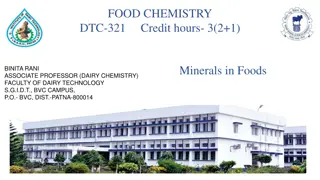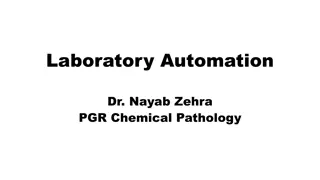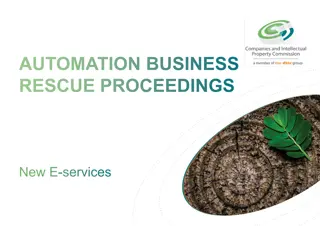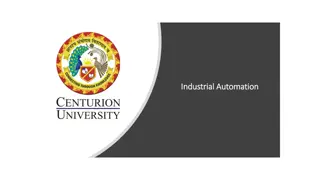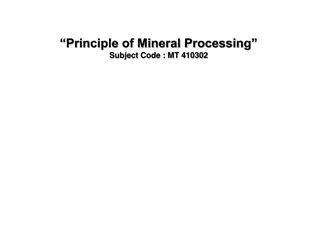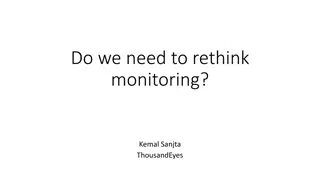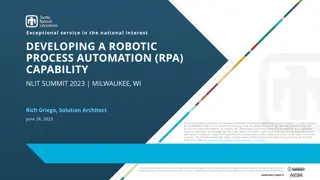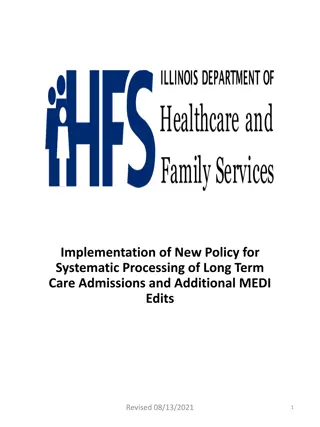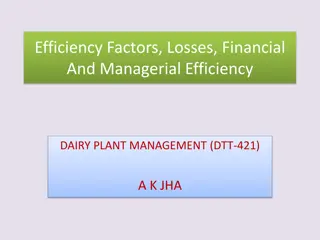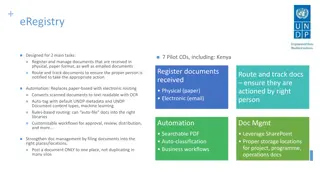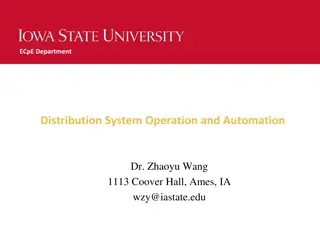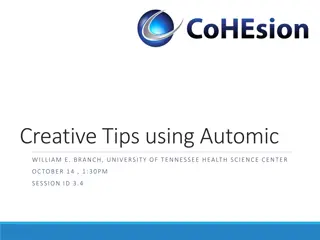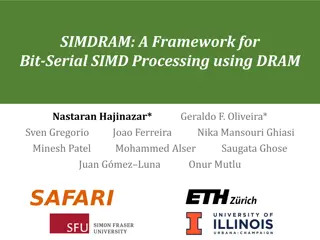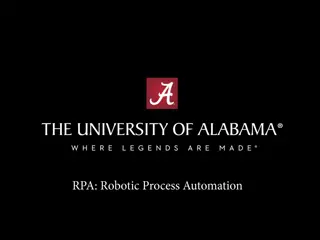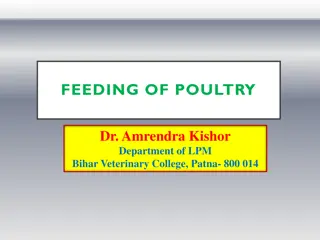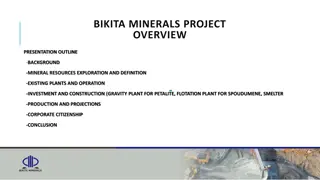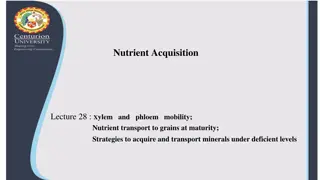Maximizing Process Automation to Enhance Minerals Processing Efficiency
Learn how to improve industrial minerals processing cost and efficiencies by maximizing process automation and control. Explore concepts like equipment efficiency and ways to minimize unplanned shutdowns through systematic equipment checks. Achieving high equipment uptime is key to reducing operating costs and enhancing overall process performance.
Download Presentation

Please find below an Image/Link to download the presentation.
The content on the website is provided AS IS for your information and personal use only. It may not be sold, licensed, or shared on other websites without obtaining consent from the author. Download presentation by click this link. If you encounter any issues during the download, it is possible that the publisher has removed the file from their server.
E N D
Presentation Transcript
How to Improve Ind. Minerals Processing Cost and Efficiencies by Maximizing Your Process Automation and Process Control Presentation for: Fabian Ros President & CEO Industrial Project Solutions, Inc Industrial Project Solutions 24527 Gosling, Road H1 Spring, Texas 77389 832-761-5055
Operating Cost The operating cost of any process is directly proportional to the efficiency of the process Cost Components: Equipment Efficiency Process Control Process Yield
Equipment Efficiency Basic Concepts Equipment uptime Available operating hours Actual operating hours Not planned non-operating hours Planned non-operating hours
Equipment Efficiency Basic Concepts Equipment uptime = Available Eq. Operating hours / Actual Eq. Operating hours Available operating hours = Total work hours Holidays Planned non-operating hours Planned non-operating hours = PM tasks + Product / Tooling change + R&D Actual Eq. Operating hours = Available operating hours - Unplanned non-operating hours Unplanned non-operating hours = Eq. Failures + Unforeseen events 100% Eq. Uptime = Available Eq. Op. hours / Actual Eq. Op. hours = 1 or100% The Goal is to make the Unplanned non-operating hours = 0
Minimizing the Unplanned Non-Op. Hours Our systematic approach: Equipment Safety Checks Equipment Operating Status Checks
Equipment Safety Checks Verify that every piece of equipment has the adequate safety devices in place. Assure that the installed safety devices are operating properly Verify that each safety device is reporting precisely its operating state and accurate location to the central control system. By following the above steps the plant personnel can rapidly asses the equipment fault and if it is safe reset the trigged safety device and resume the equipment operation minimizing the duration of the unplanned equipment shutdown event.
Equipment Operating Status Checks Verify that every piece of equipment is equipped with an instrument or device that continuously verifies and reports the equipment operation status to the central control system. Verify that the instruments are set and properly calibrated to protect each piece of equipment Common devices: Motor overload relays Motions sensors Plug chute switches Current transmitters
Process Control Process Out of Control Process Under Control Unpredictable Energy Consumption Constant Process Upsets Unknown Eq. Utilization Finished Prod. Out of Specification Req. Manual Start and Stop Procedures Poor Process Yield Predictable Energy Consumption Minimize Process Upsets Maximize Equipment Utilization Constant Finish Prod. Specification Fully Automatic Start & Stop Maximize Process Yield
How to Determine if Your Process is Under Control Review the Process Flow Diagrams (PFD) Review Piping & Instrumentations Diagrams (P&ID s) Verify that the required instrumentation to measure and report the critical process variables is in place.
How to Determine if Your Process is Under Control A process without instrumentation is like driving a car without gages
How to Determine if Your Process is Under Control Once having verified all the critical process variables are monitored we proceed to confirm that: Every piece of equipment is properly interlocked All required alarms are in place and reporting to the central control system. Critical process variables are performing as expected
How to Determine if Your Process is Under Control In the event that one of the critical process variables is not performing as expected, we must then do a deep process analysis to determine the reason the process is not performing as designed. This process analysis requires: In-depth process knowledge Monitoring and trending critical process variables Most important a robust control system that allows us to troubleshoot the upset process conditions
An Optimum Control System Architecture Equipment Alarms Equipment Operating Status Process Performance Critical Proc Variables Process Yield CENTRAL CONTROL Production Reports Process Alarms SYSTEM
Maximizing The Process Yield Process Yield = Raw Feed / Finished Product. Maximizing the Process Yield: Requires a multidisciplinary effort Understand the raw feed physical and chemical properties Know the finished product specification Acknowledge the current process constrains Assess any proposed process change cost benefits and ROI
Conclusions To be able to operate any process efficiently at lowest possible cost we need to: Minimize the non-planned equipment downtime Maintain the process under control Constantly look to improve the process yield All of the above will be practically impossible if we don t have a robust central control system to support the plant/process operation.
Conclusions A highly efficient process will: Lower energy consumption Require less plant personnel Protect the environment Maximize the investors return of investment.






